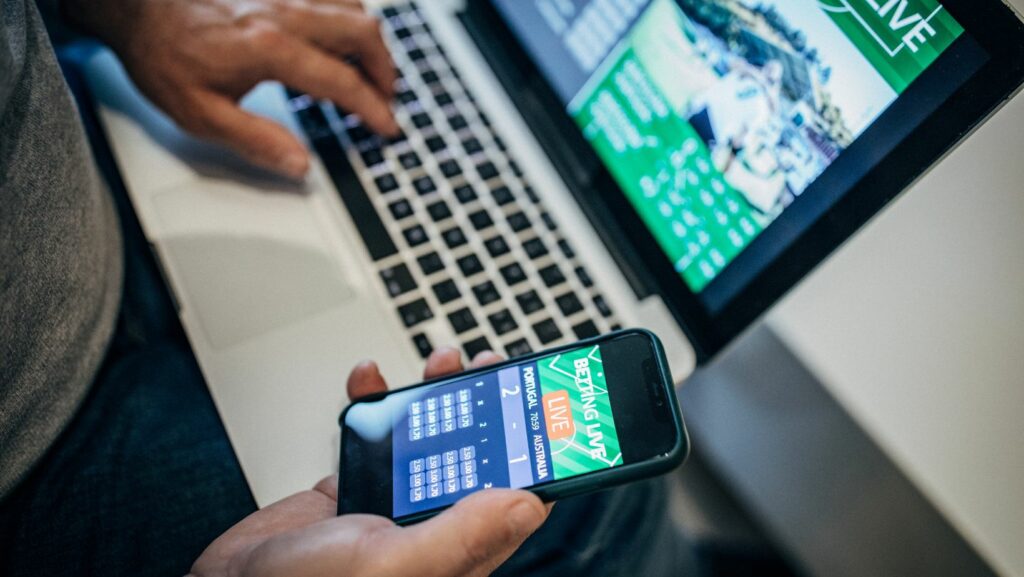When it comes to smartphones, the iPhone 11 is a beloved classic, but does it keep up with the latest tech trends? Many folks are jumping on the 5G bandwagon, but the iPhone 11? Well, it’s still stuck in the 4G lane, sipping coffee while waiting for its turn to join the high-speed party.
Table of Contents
ToggleOverview of iPhone 11 Features
The iPhone 11 remains a popular choice due to its appealing features, though it does not support 5G connectivity. Its specifications cater to users seeking a solid smartphone experience.
Design and Build Quality
Apple designed the iPhone 11 with a sleek look and premium materials. It features an aluminum and glass body that feels sturdy and premium. Colors include black, green, yellow, purple, red, and white, providing a range of choices for different tastes. The 6.1-inch Liquid Retina display offers vibrant colors and sharp visuals, supporting a resolution of 1792 x 828 pixels. The device also boasts an IP68 rating, signaling durability against water and dust.
Performance Specifications
A12 Bionic chip powers the iPhone 11, ensuring smooth performance across various tasks. This chip enhances efficiency, making multitasking seamless. It comes with 4GB of RAM, supporting the processing power for demanding applications and gaming. Storage options include 64GB, 128GB, and 256GB, accommodating different user needs. Battery life caters to regular use, allowing up to 17 hours of talk time and 10 hours of internet use. The device runs on iOS, maximizing compatibility with a host of apps.
Understanding 5G Technology
5G technology represents the fifth generation of wireless communication, offering significantly faster speeds and lower latency than previous standards. It enhances mobile connectivity, enabling a more seamless experience for users.
What is 5G?
5G refers to a network standard designed to improve internet speed and connectivity. Enhanced bandwidth allows greater data transfer rates, reaching up to 10 Gbps in optimal conditions. Lower latency, often below 1 millisecond, dramatically reduces delays during data exchange. Improved roaming capabilities ensure better connectivity across geographic areas. Multiple input and output antennas contribute to superior performance, especially in densely populated urban environments. High-frequency bands, when employed, can support numerous devices simultaneously without compromising quality.
Benefits of 5G Connectivity
5G connectivity brings substantial advantages across various sectors. Higher data speeds enable quicker downloads and uploads, enhancing the user experience for applications like streaming and online gaming. Improved reliability fosters real-time communication, essential for technologies such as autonomous vehicles and remote surgeries. Greater network capacity accommodates the growing number of connected devices, promoting the Internet of Things. 5G reduces energy consumption for data transmission, leading to lower operational costs for businesses. Enhanced mobile broadband supports innovative uses, such as augmented reality and virtual reality experiences.
iPhone 11 and 5G Compatibility
The iPhone 11 does not support 5G technology. Functioning solely on 4G LTE networks, it can’t leverage the high speeds and low latency offered by 5G. Users seeking faster connectivity must consider newer models equipped with 5G capabilities.
Does iPhone 11 Support 5G?
The iPhone 11 lacks 5G support entirely. Its hardware and modem configurations are designed for 4G LTE. Despite providing solid connectivity, it falls short of the enhanced performance expected with 5G networks. This limitation may affect users who prioritize speed and efficiency in their mobile experience. Comparatively, other smartphones designed for 5G will outperform it in high-demand situations like streaming and gaming.
Comparison with Other iPhone Models
iPhone models like the iPhone 12 and later include 5G compatibility. They utilize advanced chipsets that accommodate the latest wireless standards. Faster download speeds and improved user experiences come with these models. While the iPhone 11 excels in design and performance, it lacks the modern connectivity features of its successors. Upgrading to a newer model often reflects a more future-proof choice for users focused on longevity and technology trends.
User Experience with 4G on iPhone 11
The iPhone 11 offers a reliable 4G experience, catering to users who prioritize solid performance over the latest connectivity options.
Speed and Connectivity
Data download speeds on the iPhone 11 peak at around 600 Mbps, which meets everyday needs for browsing and streaming. Network performance can vary based on location and carrier, but users often find 4G LTE provides a stable connection for most activities. Upload speeds typically reach up to 100 Mbps, making functions like photo sharing and video uploads efficient. Users benefit from good call quality and reliable data usage, even in urban environments where 4G is strong.
Limitations of 4G on iPhone 11
While the iPhone 11 does rely solely on 4G, this limitation affects its ability to match the rapid advancements in mobile technology. Users facing heavy data demands, such as high-definition streaming or online gaming, might experience slower speeds during peak times. Network congestion can hinder performance, especially when multiple devices connect simultaneously. Limited support for the latest features and applications that rely on faster speeds also becomes apparent. Users seeking enhanced connectivity often consider newer iPhone models featuring 5G capabilities.
The iPhone 11 remains a solid choice for users who appreciate its design and performance but lacks 5G capabilities. As technology continues to advance the demand for faster connectivity is growing. Users who rely heavily on data-intensive applications may find the limitations of 4G increasingly restrictive.
For those looking to future-proof their devices and take advantage of the benefits that 5G offers upgrading to newer models like the iPhone 12 or later is advisable. While the iPhone 11 can handle everyday tasks well it may not meet the needs of users seeking the latest in mobile technology.










